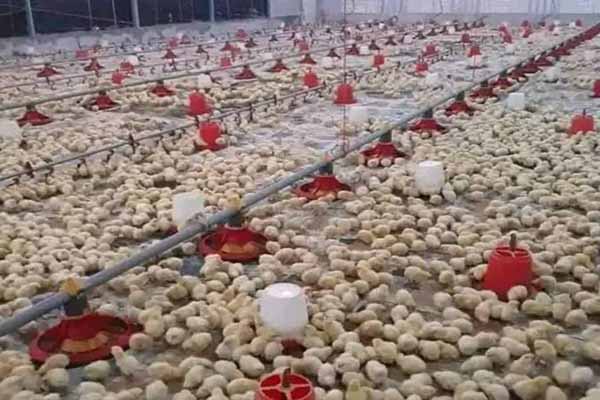Tanzania Chicken Equipment: Common Troubleshooting and Solutions
Time : 2025-04-26
In Tanzania, the poultry industry is rapidly growing, and with it comes the need for efficient chicken equipment. Whether you’re a small-scale farmer or a large-scale poultry producer, troubleshooting common issues with your chicken equipment is crucial to maintaining productivity and profitability. In this article, we’ll delve into some of the most common problems encountered with chicken equipment in Tanzania and provide practical solutions to help you keep your operation running smoothly.
1. Chicken Feeders and Waterers: Clogs and Leaks
One of the most common issues with chicken equipment in Tanzania is the clogging of feeders and waterers. This can be caused by debris, feed particles, or even small stones getting into the system.
What to Do:
– Regularly inspect your feeders and waterers for any signs of clogging.
– Clean the units thoroughly, removing any debris or particles.
– Check for any signs of wear and tear, such as cracks or loose joints, which could lead to leaks.
Preventative Measures:
– Use fine-mesh screens or filters to prevent larger debris from entering the system.
– Ensure that feeders and waterers are properly installed and aligned.
2. Heating and Ventilation Systems: Overheating and Underheating
Maintaining the right temperature for your chickens is essential for their health and growth. However, heating and ventilation systems can sometimes malfunction, leading to overheating or underheating.
What to Do:
– Regularly check the temperature inside the chicken coop using a reliable thermometer.
– If the temperature is too high, turn down the heating system or open windows to allow for better ventilation.
– If the temperature is too low, increase the heating system or ensure that the chickens have access to additional heat sources.
Preventative Measures:
– Install thermostats to automatically control the temperature.
– Regularly inspect and maintain heating and ventilation equipment to ensure they are functioning correctly.
3. Egg Collecting Equipment: Inefficiency and Breakdowns
Egg collection equipment is a vital part of any poultry operation. However, it can be prone to inefficiencies and breakdowns, leading to losses.
What to Do:
– Regularly clean and inspect egg collection equipment for any signs of damage or wear.
– Check the sensors and mechanisms to ensure they are working correctly.
– If the equipment is not collecting eggs efficiently, adjust the settings or replace any faulty parts.
Preventative Measures:
– Implement a regular maintenance schedule for your egg collection equipment.
– Train your staff on how to properly use and maintain the equipment.
4. Lighting Systems: Inconsistent Light and Power Outages
Proper lighting is crucial for the health and productivity of chickens. However, lighting systems can experience issues, such as inconsistent light or power outages.
What to Do:
– Ensure that the lighting system is providing the correct amount of light for the chickens’ needs.
– Check for any signs of damage to the bulbs or wiring.
– Have a backup power source, such as a generator, in case of power outages.
Preventative Measures:
– Use high-quality bulbs that are designed for agricultural use.
– Regularly inspect the wiring and connections to prevent electrical issues.
5. Chicken Coop Doors: Malfunctions and Security Issues
The doors of a chicken coop are crucial for the safety and security of the chickens. However, they can sometimes malfunction or pose security risks.
What to Do:
– Check the doors for any signs of wear and tear, such as loose hinges or broken latches.
– Ensure that the doors are properly secured at all times.
– Consider installing an automatic door system that can be controlled remotely or by sensors.
Preventative Measures:
– Regularly lubricate hinges and latches to prevent them from becoming stiff or jammed.
– Install security features, such as locks or alarms, to deter predators.
Conclusion
Maintaining your chicken equipment in Tanzania is essential for the success of your poultry operation. By addressing common troubleshooting issues and implementing preventative measures, you can ensure that your equipment runs smoothly and efficiently. Remember, regular maintenance and prompt repairs are key to keeping your chickens healthy and your operation profitable.
—












